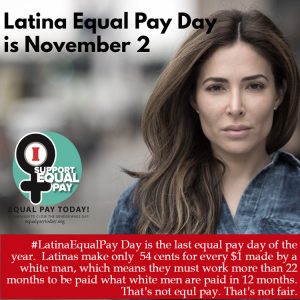LatinaLista — Every so often, someone will conduct research that uncovers the true reality of how far certain sectors have come since the last century. Though it’s only been ten years since the 20th Century, there’s an expectation that everything else should have evolved as quickly as has technology.

Too bad that’s not true.
Take for instance, women. The Institute for Women’s Policy Research found that just in 2010 alone, there remained challenges to the most vulnerable women in society — poor, minority, under-educated and single moms.
For example, it was found that those women who want their college degrees but are single mothers, are having a hard time at the junior college level. Not because they can’t handle the workload, though that could be a separate problem, but because the supply of child care on community college campuses can’t meet the demand.
Also, though this generation of women grew up on the mantra “Free to be,” meaning they were raised on the drill to be whatever they wanted to be, research is showing that more of them are opting for traditional female occupations that pay less.
According to 2009 data from the U.S. Dept. of Labor, the top 20 occupations that employ more women than men are:
- Secretaries and administrative assistants, 3,074,000
- Registered nurses, 2,612,000
- Elementary and middle school teachers, 2,343,000
- Cashiers, 2,273,000
- Nursing, psychiatric, and home health aides, 1,770,000
- Retail salespersons, 1,650,000
- First-line supervisors/managers of retail sales workers, 1,459,000
- Waiters and waitresses, 1,434,000
- Maids and housekeeping cleaners, 1,282,000
- Customer service representatives, 1,263,000
- Child care workers, 1,228,000
- Bookkeeping, accounting, and auditing clerks, 1,205,000
- Receptionists and information clerks, 1,168,000
- First-line supervisors/managers of office and administrative support workers, 1,163,000
- Managers, all other, 1,106,000
- Accountants and auditors, 1,084,000
- Teacher assistants, 921,000
- Cooks, 831,000
- Office clerks, general 821,000
- Personal and home care aides, 789,000
When it comes to unemployment, Latinas have the second highest number out of work at 11.5 percent, after black women at 12.4 percent. And the U.S. Census shows that Latinas comprise the highest group of stay-at-home moms.
Research further shows that those single moms who do want to earn that Bachelor’s degree often find themselves frustrated in their classes. It’s not that they’re worrying about the kids, as much as it is, they enter college with a literacy gap.
The data suggest that student parents more often face a literacy gap when compared to other students in postsecondary settings. This literacy gap is likely exacerbated by differences in the socioeconomic backgrounds and living situations of student parents.
Student parents are more likely to come from a family where no parent has a college degree, are more likely to be eligible for the federal need-based Pell grant program, and are more likely to work full time while pursuing postsecondary education.
Single parents are particularly likely to quality for need-based financial aid–59 percent are eligible for Pell assistance, more than twice the proportion of married parents or students without children.
The research further reveals that while these can be serious challenges single moms persevere and most eventually do receive their degrees.
Yet, how many Latinas don’t?
Rather than accept the research as an indication of how bad Latinas have it, it can be looked at as a starting point of what needs to be done in Latino communities:
1. Deliver accurate sex education classes to junior and high school students.
2. Greater emphasis on developing literacy skills in school starting with elementary through high school.
3. Bring in a wide variety of community role models from different occupations to show students what they can become.
4. Junior colleges should work with local resources in the community to create alternative child care options.
5. Introduce visualization exercises to students so they can see themselves successful, degreed and happy — and not just another statistic.




